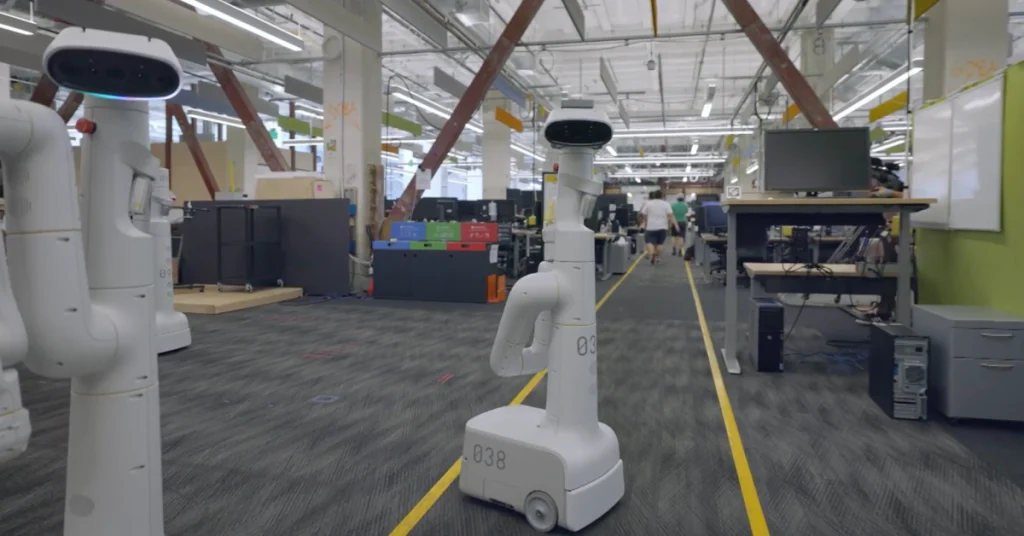To make it easier for its employees to retrieve Coke and chips from the breakroom, Alphabet Inc.’s Google is fusing the eyes and arms of real robots with the knowledge and communication abilities of virtual chatbots.

The mechanical waiters, which were demonstrated to reporters last week, represent a breakthrough in artificial intelligence that paves the way for multifunctional robots that are just as simple to operate as ones that carry out specialised chores like vacuuming or being on watch.
Google robots are not yet available for purchase. They only carry out a small number of straightforward tasks, and the corporation hasn’t yet given them the “OK, Google” summoning capability that users are accustomed to.
Although Google claims to be pursuing research responsibly, fears about robots becoming surveillance machines or having chat technology that might respond in an inappropriate manner, as Meta Platforms Inc. and others have recently encountered, could ultimately cause adoption to stagnate.
Amazon.com Inc. and Microsoft Corp. are also conducting similar robotics research.
The immediate business impact won’t be fully understood for some time, according to Vincent Vanhoucke, senior director of Google’s robotics research. Google’s robot understands that picking up a sponge is a practical and wiser reaction than apologising for making the mistake when asked to help clean up a spill.
The robots comprehend naturally spoken commands, evaluate potential actions in light of their capabilities, and formulate more manageable steps to complete the request.
By giving the robots language technology, which draws knowledge of the world from Wikipedia, social media, and other websites, the chain is made possible. Similar AI powers chatbots and virtual assistants, but Google claims that it has never been used so extensively on robots.
In a study published in April, it revealed the initiative. Since then, adding more complex language AI has increased the robots’ success rate on commands from 61% to 74%, according to a business blog post published on Tuesday. The robots are created by a different Alphabet company called Everyday Robots, and they are currently just capable of bringing employees refreshments.

